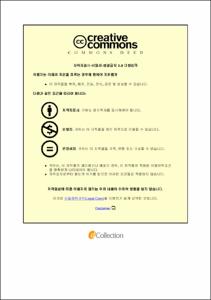한국 신발산업의 역량강화 전략에 관한 연구 : 동남권 신발클러스터와 개성공단을 중심으로
- Alternative Title
- A Study on Strategies for Strengthening Capacity in the Korean Footwear Industry : Focusing on the Southeastern Shoe Cluster and the Kaesong Industrial Complex
- Abstract
- This study analyzes the environmental factors of the shoe cluster around Busan in southeast Korea—the center of the Korean footwear industry—to examine ways to develop it and find policy measures to secure the sustainability of the footwear industry. The Korean footwear industry is a traditional manufacturing-oriented sector and has structural problems like those experienced by all other traditional industries. This is a study of the ways to overcome these problems through innovation and policy measures while maintaining the context of the industry’s situation where the local shoe manufacturing capacity is fast shrinking. The SWOT-AHP analysis technique is used to find alternative strategies to strengthen the manufacturing capacity of the Korean footwear industry. The highest opportunity factor was found in the plan to develop the footwear industry in the southeast. Priority factors see the government's efforts to reopen the Kaesong Industrial Complex through inter-Korean cooperation as important for the southeastern footwear industry to overcome the limitations of OEM-based, labor-intensive industry practices. Research & development capabilities, knowledge management, and marketing policies of homegrown footwear companies are identified as important areas for developing alternative strategies to respond to the erosion of the domestic market by international brands.
Through these factors, this study intends to explore policy measures for the sustainable development of the footwear industry. The approach uses the "inter-Korean economic cooperation opportunity," identified as a priority factor, for the strategy to strengthen the manufacturing capacity of the footwear industry. This study intends to secure the legitimate role of the footwear industry in the mutually beneficial cooperation model between the two Koreas based on the necessity and value of creating a shoe-only cluster using the Kaesong Industrial Complex, which is a special economic zone located in North Korea. The potential for creating an exclusive footwear cluster in the Kaesong Industrial Complex is confirmed by taking into consideration the strength of the footwear cluster in the Southeast, and the socio-economic conditions of North Korea. This study makes policy suggestions to strengthen the footwear industry’s manufacturing capabilities by establishing it as the leader of a mutually beneficial inter-Korean cooperation model based on the paradigm of a peaceful economy.
Through this study, experts in the shoe industry have discovered the desire for the reopening of the Kaesong Industrial Complex as a means to secure the sustainability of the Korean shoe industry based on OEM manufacturing. Considering the economic conditions of the two Koreas and their ability to utilize the Kaesong industrial complex as a hub for inter-Korean economic cooperation, specialization in a labor-intensive light industry is necessary. This can act as a stepping stone to establishing infrastructure for the creation of a shoe cluster based unified economy that will not only attract South Korean companies but also companies across the world. It is regrettable that the creation and full utilization of the complex's shoe cluster cannot be an issue on the negotiating table unless North Korea's hostile stance toward the US changes, and unless the US-led sanctions are lifted. It is also unfortunate that the causes and effects of relationships between various variables were not considered in strengthening the footwear industry's manufacturing capacity. However, given this is a first of its kind study exploring the Kaesong Industrial Complex from the footwear industry’s perspective, it is expected to add momentum to promote further studies on ways to revitalize the footwear industry by taking advantage of the Kaesong Industrial Complex.
- Issued Date
- 2022
- Awarded Date
- 2022. 2
- Type
- Dissertation
- Keyword
- 지속가능한 신발산업 개성공단 신발전용단지 남북경제협력 산업정책
- Publisher
- 부경대학교
- Alternative Author(s)
- Do Gyu Jang
- Affiliation
- 부경대학교 기술경영전문대학원
- Department
- 기술경영전문대학원 기술경영학과
- Advisor
- 천동필
- Table Of Contents
- Ⅰ. 서 론 1
1. 연구의 배경과 목적 1
2. 논문의 요약 8
Ⅱ. 이론적 배경 15
1. 신발산업 현황과 경쟁력 15
2. 북한 산업현황과 경제특구 29
3. 신발전용단지의 필요성 47
4. 연구의 방법 51
Ⅲ. 동남권 신발산업의 발전방안에 관한 연구 65
1. 문제제기 65
2. 선행연구 67
3. 연구모형과 분석방법 70
4. 분석결과 75
5. 소결 87
Ⅳ. 개성공단 신발전용단지 활용 전략에 관한 연구 92
1. 문제제기 92
2. 선행연구 94
3. 연구모형과 분석방법 98
4. 분석결과 105
5. 소결 120
Ⅴ. 결 론 128
1. 연구결과 요약 128
2. 연구의 시사점 131
3. 연구의 한계점과 향후 연구의 방향 145
참고문헌 148
1. 국내 문헌 148
2. 해외 문헌 161
영문초록(ABSTRACT) 166
부 록 168
- Degree
- Doctor
- Files in This Item:
-
-
Download
 한국 신발산업의 역량강화 전략에 관한 연구 : 동남권 신발클러스터와 개성공단을 중심으로.pdf
기타 데이터 / 2.76 MB / Adobe PDF
한국 신발산업의 역량강화 전략에 관한 연구 : 동남권 신발클러스터와 개성공단을 중심으로.pdf
기타 데이터 / 2.76 MB / Adobe PDF
-
Items in Repository are protected by copyright, with all rights reserved, unless otherwise indicated.